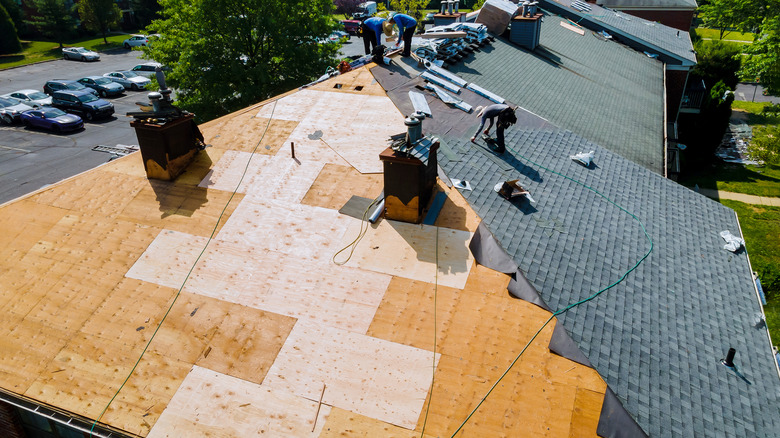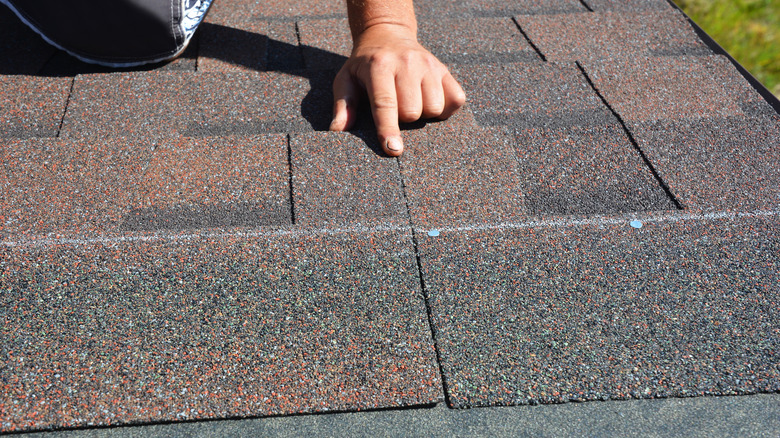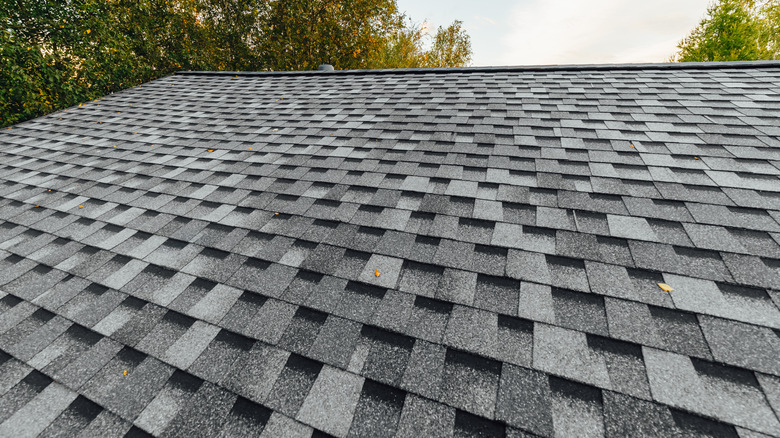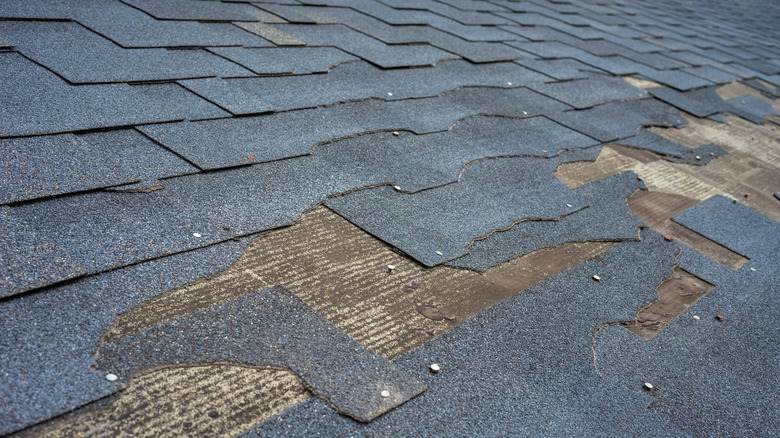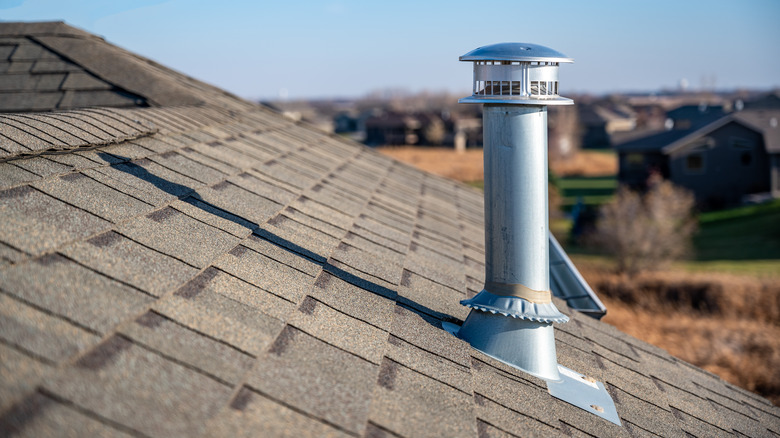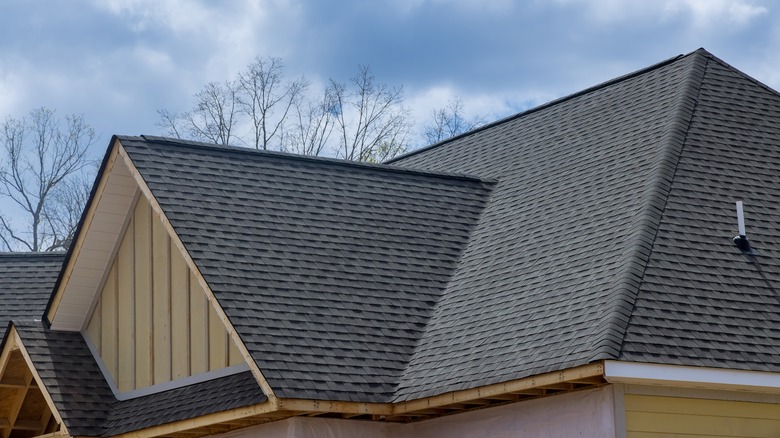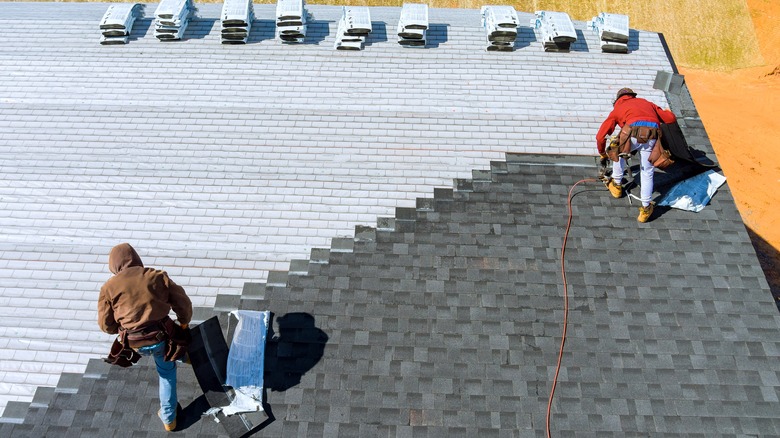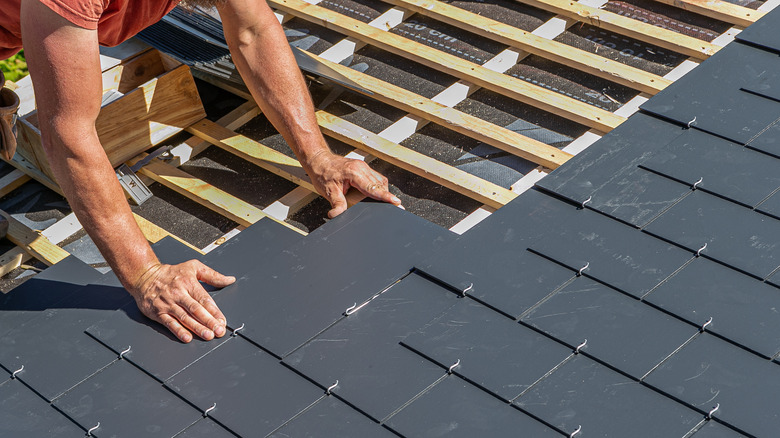Asphalt Vs. Fiberglass Shingles: Which Is Better?
If you're thinking about getting a new roof, there are several things to consider. First, as Bill Ragan Roofing Company explains, you want to confirm whether your roof is actually in need of a full replacement, or whether a few repairs will help address any issues that you're experiencing. If a full replacement is deemed necessary, one of the next most important decisions is to find a roofing company you can trust to complete the job for you. As you compare the different contractors in your area, Money recommends getting references from neighbors and checking websites such as Angi or ContractorCheck to make sure you choose a reputable company that will provide honest advice and fair pricing.
Once you've made these decisions, and have the roofing company over to give you a quote for their services, you'll also need to decide on the type of roofing material you want to use. Asphalt and fiberglass shingles are two of the most readily available options you'll have to choose between. If you're not familiar with each of these materials, read on to learn more about each shingle type so that you can decide which is the best choice for your new roof.
What are asphalt shingles?
Best Pick Reports shares that asphalt shingles are among the most popular roofing types. There are actually two different types of asphalt shingles: organic asphalt shingles and fiberglass asphalt shingles. Since this article is comparing fiberglass shingles and asphalt shingles, we'll use the term asphalt shingles to refer to organic asphalt shingles to help you understand the differences between these two varieties.
Asphalt shingles are thick and are known for their durability. They feature a cellulose fiber base that is covered with waterproof asphalt. To extend their lifespan and prevent UV damage, a protective layer made from granules of ceramic covers the asphalt layer. When shopping for asphalt shingles, there are three different styles to choose from: 3-tab shingles, architectural shingles, and luxury shingles. Each of these styles will provide a different look to your room. 3-tab shingles got their name because each section of roofing is cut to make it look like it is actually three individual pieces. This design makes 3-tab shingles less expensive than the other options.
While 3-tab shingles are flat and installed in just a single layer, architectural shingles can provide more dimension to a roof with their layered installation. Luxury shingles — the most expensive option — mimic the look of high-end roofing materials. As Bill Ragan Roofing Company explains, they provide a slate-like look to a roof, which can make it look more visually appealing than 3-tab or architectural shingles.
What are fiberglass shingles?
As explained above, fiberglass shingles are actually a type of asphalt shingle. According to Modernize, this type of shingle has a woven fiberglass base instead of the cellulose base that you find with asphalt shingles. The other layers of a fiberglass shingle — the waterproof asphalt and UV protective ceramic granules layers — are the same as you'll find on an asphalt shingle. However, fiberglass shingles require less asphalt than is needed when making an asphalt shingle. This is because the fiberglass base contributes greater durability to the shingle than the cellulose layer of a asphalt shingle.
While fiberglass shingles are lightweight, they are still very durable. Fiberglass is non-porous. This means that it does not absorb water and will not alter in shape over time. As Best Pick Reports explains, fiberglass shingles are also available in the same three styles as traditional asphalt shingles: 3-tab, architectural, and luxury. Both shingle types also come in several shades to help homeowners coordinate the look of their roof with the rest of their home.
Pros and cons of asphalt shingles
There are several pros and cons of asphalt shingles to consider before making a final decision on your preferred roofing material. Central Bay Roofing & Restoration outlines some of these benefits and drawbacks that may impact whether asphalt shingles are the right choice for you. One of the biggest benefits of asphalt shingles is their price. They are one of the cheapest choices when it comes to roofing materials. An asphalt shingle roof also takes minimal time to install. Installation doesn't require as much prep work as is necessary for other materials. Furthermore, because of the variety of styles and colors that are available, asphalt shingles can nicely complement the look of different types of homes.
However, asphalt shingles also have some drawbacks.While asphalt shingles are less expensive than other roofing materials, they are also not as long-lasting. Because they weigh less than many materials, they can be more likely to become damaged earlier, which could lead to other issues, such as water leaks. This could mean you'll need a new roof sooner than you'd like. Finally, even though asphalt shingles come in several colors and styles, they are more commonplace than some other material options. If you're looking to give your home more of a unique look, they may not be the best option to consider. After all, depending on where you live, many of your neighbors' homes likely have an asphalt shingle roof.
Pros and cons of fiberglass shingles
As with asphalt shingles, fiberglass shingles also have their own set of pros and cons. One benefit of fiberglass shingles that QualitySmith highlights is their fire-resistance rating. Their fiberglass base — compared to the cellulose base of asphalt shingles — makes them better able to resist fires. RoofCalc shares additional benefits of fiberglass shingles. They note that the fiberglass base makes this type of shingle better able to hold up against higher winds. They are less likely to be removed from the roof by strong winds than traditional asphalt shingles. A fiberglass shingle roof also requires minimal maintenance and may last 20 years or longer. Fiberglass shingles are also more moisture-resistant than asphalt shingles, which can contribute to their longer lifespan.
Despite the pros of choosing a fiberglass shingle roof, there are also some cons to consider. First, it is more time-consuming and challenging to install a fiberglass roof. Even if you're not planning to attempt the installation yourself, it may take your roofing company longer to get the roof installed because of the specialized tools that are required. A fiberglass shingle roof will also cost more to install than a traditional asphalt shingle roof. If you're working with a tight budget, it may make more sense for you to choose a more economical option.
Do asphalt or fiberglass shingles last longer?
While a roof's lifespan is impacted by a variety of features, most fiberglass shingle roofs last longer than their asphalt shingle counterparts. SIPE Roofing and General Contracting explains that a fiberglass shingle roof can last for as long as 25 years. An asphalt shingle roof, on the other hand, is likely to require replacing after about 15 years. According to Findlay Roofing, these different life expectancies are impacted by the materials used to make each shingle. An asphalt shingle's cellulose base can rot or bend with exposure to moisture over the years, causing damage and requiring more frequent replacement.
Beyond the material, the shingle style can also impact the lifespan of a roof. A 3-tab shingle roof will have a shorter lifespan than an architectural shingle roof. This is because 3-tab shingles are thinner than layered architectural shingles. Some other factors that can play a role in determining how long an asphalt or fiberglass shingle roof will last include the climate and weather in the area, the quality of the shingles themselves, and the quality of the installation.
Are asphalt or fiberglass shingles more environmentally friendly?
Fiberglass shingles are more environmentally friendly than asphalt shingles. Whittle's Roofing Co explains that transporting fiberglass shingles is easier than moving asphalt shingles, mostly because they are much lighter weight. Because of this, their transportation creates fewer emissions, decreasing the negative impact on the environment. As described above, asphalt shingles have a cellulose base, and fiberglass shingles have a fiberglass base. Cellulose comes from wood. This means that asphalt shingles also consume more natural resources during the production process.
Asphalt is a limited resource that must be removed from the ground to make shingles. While both asphalt shingles and fiberglass shingles are made using asphalt, much smaller quantities are needed for fiberglass shingles — they have just a thin layer of asphalt. This further limits the impact of fiberglass shingles on the environment compared to that of asphalt shingles. If environmental impact is important to you, fiberglass is probably the way to go.
There are other roofing material options to consider beyond asphalt and fiberglass shingles
If you aren't convinced that either fiberglass or asphalt shingles are the best choice for your roof, Wilson Roofing shares some other options you can consider. One of these options is wood. A roof with wood shakes can be quite attractive and is a good choice for those who want to give their home a more rustic appearance. However, before deciding on a wood roof, note that more maintenance will be required than is necessary with many other roofing options.
You could also consider a metal roof. Metal roofs can improve a home's energy efficiency. They are also very long-lasting. Slate is another roofing option. Slate is a type of stone, making it a durable and long-lasting choice. In addition to their durability, slate roofs are also very attractive. The hand-cut pieces come in a variety of colors to add visual appeal to any home. Forbes shares that slate roofs may last between 50 and 200 years, but that they are among the most expensive roofing options.
